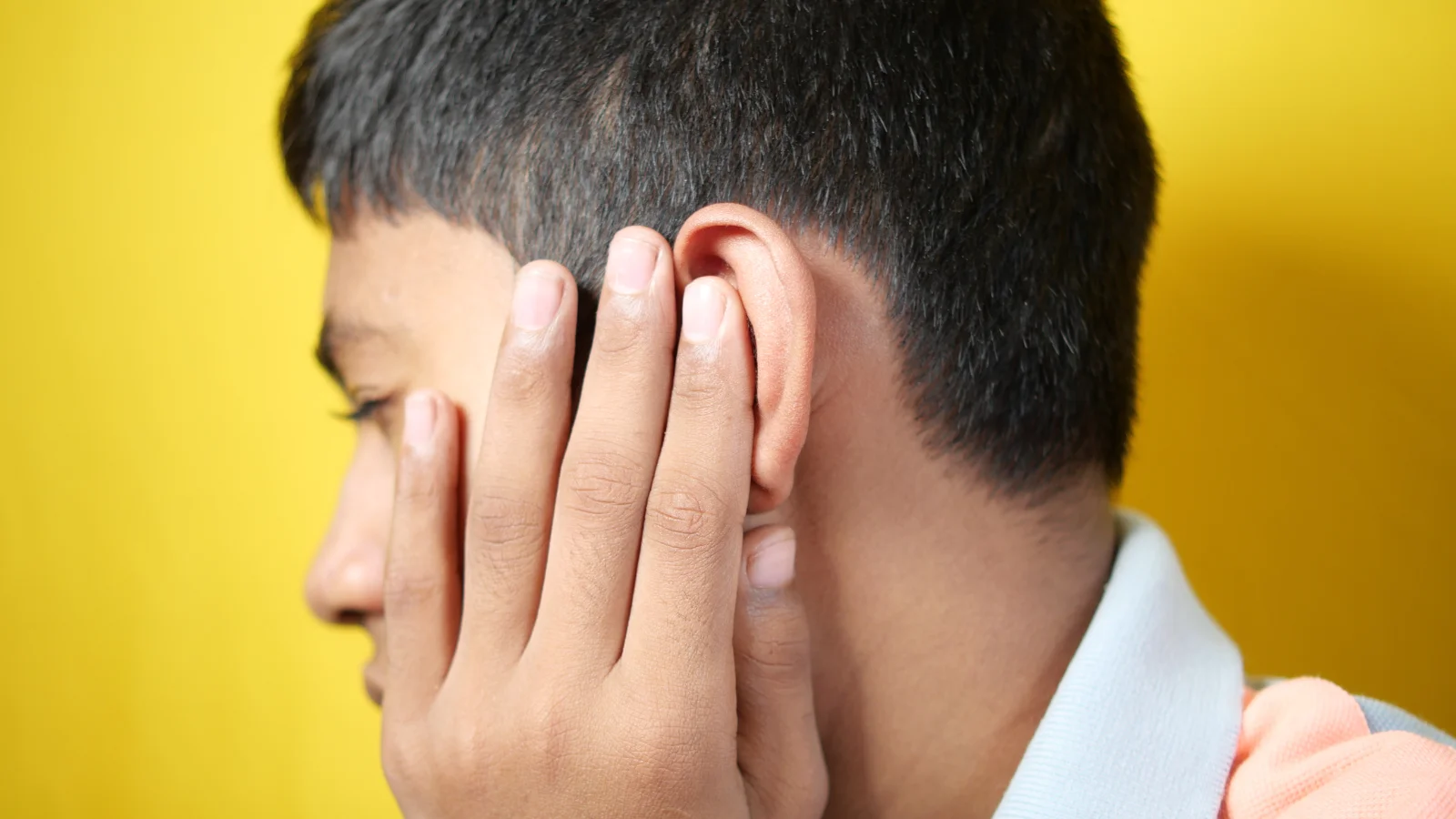At our audiology practice in Narragansett, RI, we have encountered numerous patients seeking relief from various ear issues, including pain, itchiness, discomfort, and of course, loss of hearing. One of the common complaints we often address is pressure in the ears.
In this blog post, we will explore the symptoms, causes, and potential remedies for ear pressure, focusing on the sinuses and the middle ear.
The Middle Ear and Sinuses: A Balancing Act
To comprehend pressure in the ears, it is important to grasp the interaction between the middle ear and the sinuses. The middle ear is a small air-filled space located behind the eardrum, and is connected to the back of the throat through the Eustachian tube.
The Eustachian tube serves as a valve that is responsible for equalizing pressure, ensuring that the pressure on both sides of the eardrum remains balanced.
Under normal circumstances, when you yawn or swallow the Eustachian tube opens intermittently, allowing air to flow in and out of the middle ear intermittently. However, certain factors can disturb this delicate equilibrium, leading to an imbalance in pressure and resulting in pain, discomfort, or pressure in the ears.
Causes of Ear Pressure
We usually feel ear pressure whenever we ride a plane, right? Well, there are other factors that contributes to ear pressure such as:
- Eustachian Tube Dysfunction: When the Eustachian tube has issues that prevent it from opening properly, it becomes blocked, leading to an increased pressure in the middle ear. Such changes in middle ear pressure may also trigger a feeling of fullness or clogged ears. The Eustachian tube’s normal functioning may be disrupted by allergies, colds, sinus infections, or structural abnormalities.
- Sinus Congestion: As we have mentioned earlier in this article, the sinuses and the middle ear are interconnected through a series of narrow passages. When the sinuses become blocked due to colds, allergies, or sinusitis, this congestion can indirectly affect the middle ear and result in ear pressure.
- Altitude Changes: Rapid changes in altitude, such as during a plane ride or mountainous journeys, can trigger pressure in the ears due to the body’s attempt to equalize the pressure between the middle ear and the surrounding environment.
- Barometric Pressure Changes: The weather is usually attributed to changes in barometric pressure. When there are changes in the barometric pressure, the air pressure inside the ear tends to change as well, leading to pressure in the ears. Some individuals are more sensitive to such pressure fluctuations than others.
Symptoms of Ear Pressure
Individuals experiencing discomfort or pressure in the ear may encounter a variety of symptoms, including:
- Fullness or clogged sensation in the ears
- Reduced or muffled hearing
- Ear pain or discomfort
- Crackling or popping sounds
- Dizziness
- Tinnitus (ringing in the ears)
Addressing Ear Pressure: Potential Remedies
It is always recommended to consult with an audiologist for an accurate diagnosis and evaluation. However, the following strategies below may help alleviate ear pressure temporarily:
- Swallowing or yawning: Simple actions using your jaw like swallowing or yawning can help open the Eustachian tube, equalizing pressure and relieving discomfort.
- Nasal decongestants: Oral decongestants or over-the-counter decongestant sprays can reduce sinus congestion, facilitating better airflow and potentially alleviating ear pressure.
- Keep warm: Applying a warm compress or taking a warm shower can help relax the muscles around the Eustachian tube, promoting better drainage and minimizing pressure.
- Chewing gum or sucking on candy: If you are prone to experiencing ear pressure, you may want to keep a gum or candy in your pocket at all times. The repetitive motion of sucking on candy or chewing gum encourages swallowing, which can help in opening the Eustachian tube and equalizing pressure.
- Valsalva maneuver: This ear clearing technique involves gently blowing while pinching the nostrils.
- Toynbee maneuver: This is another ear clearing technique that involves swallowing with the nose and mouth closed. It helps equalize pressure in the ears and provide almost instantaneous relief for most individuals.
- Humidifiers: Did you know that humidifiers can help with pressure in ear issues? Adding moisture to the air with the help of a humidifier can help prevent dryness in the nasal passages and help reduce sinus congestion.
- Medications: In some instances, a hearing care provider may recommend medications such as nasal corticosteroids or antihistamines to address underlying allergies or sinus issues contributing to ear pressure.
When to Seek Professional Help
While the above mentioned remedies may provide temporary relief for pressure in the ears, persistent or severe ear pressure should be evaluated by an audiologist or Ear, Nose and Throat physician.
Audiologists can conduct a thorough examination, identify the underlying cause, and recommend appropriate treatment options tailored to your specific condition.
Audiologists in Narragansett, RI
South County Hearing provides comprehensive hearing care services in Narragansett, RI, and nearby locations.
Whether you are experiencing pressure in the ears, muffled hearing, or some other auditory concern, don’t hesitate to reach out to us. Your hearing is our priority!
Contact us today to schedule an appointment!


